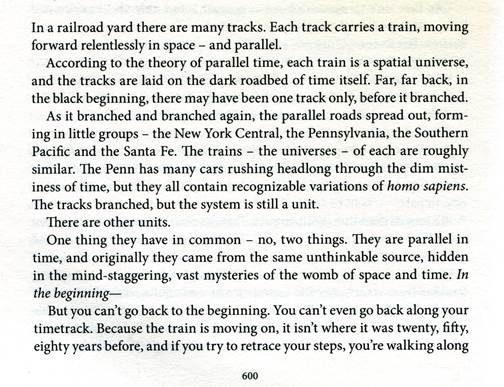In Gods in
Chaos, physical divinities of Earthly proportion are hovering in their
pyramid. Perhaps that is spirit hovering – the psychic aspect of the physical?
Sun and moon are physical twins on Earth and that is proportionate strength.
Newton scattered
light (sun) with his experimental knives (C5) and that is the parallel
reality we are in. Travelling or colonising space, as Musk &Co plan, only
makes that much more obvious. Space is not a physical environment; it consists
mainly of light and to a certain extent travel will be an algorithmic
experience of the head.
The environment
is technical since light consists of three technical elements. Electricity
(e-), magnetic lines (flux) and induced movement (in electricity of magnetic
coils). If, let’s say, they start mining asteroids they might find platinum
which is used for coating conductors. So you might get more platinum phones.
Everything they
get in space will plug into the head, or go to supply energy (He 3+), energy
that goes to power devices that plug into the head! You’re travelling in a
perspective parallel reality because that is what light consists of. The travel
is to a large extent illusory; mainly of the head in algorithmic space.
In order to
travel physically in space you’d have to do something like 2001: A Space
Odyssey and have a very attractive Earth-type culture complete with Johann
Strauss waltzes! You’d have to have gravity (centrifugal – the ferris) and
preferably gardens a la Silent Running, and even nuns of the veil nebula
and backyard planetoids like Starstruck.
All of that
might just be possible, if we (or “they”) didn’t already live in their heads
that are buzzing with dollar-signs and off-planet algorithms. With the likes of
Musk, there’s zero chance of a Paul Kantner-esque romantic hippy space odyssey.
Space is not a
physical medium; Kantner, if you listen to Starship (HYborian Bridge
62/2) visualizes a community aboard with hippy pantechnicons and hydroponic
gardens, tripping types with few clothes and babes-in-arms.
The beauty of Starstruck
is its physical cultures are almost all irrational. It’s probably the closest
of the sci-fi universes to Baudelaire’s “The priest, the knight, the poet”
(C7). There are the ever occurring nuns of the cloistered veil; there
are Galatia 9 and Brucilla who make fair chivalrous knights. As for poetry, how
about this scene of a dandy at Freebetter’s Dome with a resplendent Kalif
Bajar?
© Elaine Lee/MW
Kaluta
Kalif’s sister
is the poetic genius behind “Mind Spiders from the Planet Xenon”. These
thoroughly irrational space universes are the complete alternative to what
“they” are going to give us. They have to be created; the creative force, the
poet. The range of fashion alone in Starstruck is astonishing! It has to be built of air,
water, green grass, caverns.. to have a physicality.
© Elaine Lee/MW
Kaluta
An alternative
space culture means a lot of building to create the physicality, the lived-in
monumentality, and that’s not a business proposition, it’s a poetic act (see Tales
of Faith 7 on high altitude dirigibles)
What “they” give
us is space per se; which is just the techniques that the medium of
light allow; there is no physicality and there is no psyche. The pulp writers
such as Leigh Brackett who write of Mars are writing of the psyche of the
planet from an Earth perspective (as with Northwest of Earth).
The buildings,
monuments, canyons, canals and denizens are full of poetry because of the
build-up of psyche in the physical universe. Ancient and timelost, this is an
Earth perspective of the planet because Earth is the physical planet.
Without the physical,
space is the domain of the insubstantial head, and that is the prospect “they”
have in mind. To what extent, then, is the Mars of
actually nostalgia
for the lost physicality of planet earth? Yes, it’s still there, but our
psychic attachment to it is being retarded by the year. The two aspects connect
us to a planet, to a place.
Bilal’s monumental
depictions of cities – Paris, London, Berlin – in the Nikopol Trilogy are
supposedly set in the years 2023-2025
© Bilal The
Woman Trap
The beat-up
grandeur of the London Savoy is very reminiscent of the beaten-up grandeur of
Paris in Godard’s Alphaville. Godard uses subdued light effects while
Bilal uses ice-cream colors and sculturesque shapes, figures, fashions.
© Bilal The
Woman Trap
To what extent
are all these pulpsters’ ostensibly sci-fi fantasies actually nostalgia for
physicality? Where there is powerful – and decrepit – physicality, there is
psyche. The two are inextricably linked.
Leigh Brackett,
like CL Moore before her, seems to be writing of the dreamlike essence of Mars –
as a dream-planet of the human psyche. Edmund Hamilton (her husband) quotes her
“incurable romanticism”
It still
persists, and she maintains that when the first astronauts land on Mars they
will find dead cities, fierce riders and wicked, beautiful queens.. just as in
this book. (preface)
When Mars was
proved not to support life she stopped writing of it and created another
fantasy world. All these pulpsters are writing of planets as they would write
of Earth; in a physically nostalgic way. Earth is the physical planet and, from
an Earth perspective, other planets are psyche.
Nikopol in Greek
means City of Victory, which almost stands for the foundations of European
culture. The foundations are of proportionate monuments that stand foursquare
for the human figure and its relation to the cosmos.
The human figure
is a physical reality; the human head is as insubstantial as light. The future
we are entering is an illusion of light, and the monumentalism of the pulps is
going in an alternate direction; if not back to classical Greece and lost gods
of the Pharaohs. This seems a good place to bring in Howard (next)>























